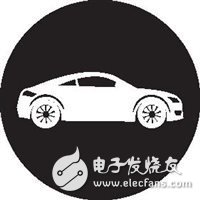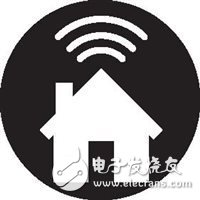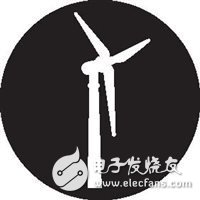Smart cities are concepts that have evolved from the integration and continuous development of many initiatives over the past few years. If we look at the growing urban population and the resources available to it, then the quality of life of our current and next generation is indeed worrying. There are many shortages of daily necessities on a global scale, such as malnutrition, lack of clean drinking water, energy shortages, transportation and living environment, and inadequate supply of educational resources. Solutions to all of these problems are focused on the development of smart cities. Building a smart city is a new initiative that requires a comprehensive reform of existing metropolitan areas, or the construction of new towns around important cities to provide maximum convenience for life. Almost all developed countries and most developing countries develop smart technologies in cities with large populations and know the advantages that such technologies will bring. Therefore, this initiative can easily get public support. Examples of smart technologies include smart transportation, smart homes and buildings, alternative energy sources, and connected living.

Intelligent transportation ensures that citizens travel between cities in a safe, reliable and efficient manner. The growing population will cause traffic congestion and increase the number of traffic accidents. The reason for this result is largely due to the increase in vehicles, the infrastructure of frequent failures, the lack of maintenance, and the shortage of reliable public transport facilities. And unsafe driving habits. Intelligent technology first contributed to law enforcement, such as red light cameras, smart toll lanes for large-capacity passenger cars (HOVs), collision avoidance for stalled vehicles (via sensors on highways), traffic Signal synchronization and variable speed limits. Drivers can also benefit from similar technologies. For example, many mid- to high-end vehicles are equipped with rear-view cameras, emergency vehicle warning systems, driver assistance and surveillance systems, night vision, traction and stability control. These systems are primarily implemented by electronic sensors, analog signal conditioners, digital signal processing, and wireless interconnect communications. By combining these technologies with smartphones, you can provide a powerful ecosystem for the general public. In addition, the use of clean energy as a public transport function can significantly reduce carbon emissions and reduce pollution to an acceptable level. TI's broad portfolio of sensors, analog signal chains, low-power wireless connectivity solutions, microcontrollers (MCUs) and high-end ARM® processors directly addresses the processing chip needs of these systems. Click here to learn more about the system.

Smart homes and buildings have gradually entered our daily lives. High levels of automation with sensing technology and wireless interconnect communication can increase energy efficiency and enhance safety and reliability while reducing operating costs. Biometrics, footprint detection, temperature control, ventilation system hazards, electrical and mechanical faults, fire and smoke detection can be achieved through sensors. Updating any of these activities on your smartphone will enable remote and real-time monitoring and control for unexpected situations in your home and building. Some of these technologies can also help municipal engineering departments such as historic sites and well-stocked libraries to avoid significant losses due to aging, theft, fire or other unnatural disasters. These systems feature several analog sensor arrays, low-power embedded systems, and wired and wireless communication devices that are perfectly matched to TI's product portfolio and system design.

Another purpose of smart cities is to meet the growing demand for energy. Many efforts have been made in this area, such as developing new energy sources, optimizing existing energy sources, and combining traditional energy sources with alternative energy sources. The European 2020 Initiative seeks to achieve cleaner, safer, more efficient and more efficient energy throughout Europe by 2020 with significant inputs and expenditures. At the same time, it is hoped that this initiative will increase people's awareness of energy conservation, carbon emissions reduction, environmental protection and natural resource conservation. Only smart grids can integrate the power generated by a wide range of alternative energy sources with the output of traditional large power plants and provide real-time energy to users with different needs. The challenges faced by smart grids include grid resiliency, self-healing, network optimization, interoperability (mixing of different energy sources), power economy, intelligent storage, real-time monitoring, and quality of service.
Smart cities will have a steady stream of reliable electricity and energy to drive economic growth and productivity, and improve quality of life and safety. Several solar and wind power plants can form a microgrid that manages relatively small demands by local power generation and minimizes transmission and distribution losses. Cities and towns that promote green initiatives have made wind and solar energy the primary source of power generation, using the latest technologies for solar panels, street lighting, grid communications, energy harvesting and tracking. Due to years of development in chip integration technology, power density improvements and connectivity options (wired/wireless) make these added functions more cost effective. Smart cities also provide power flow monitoring to encourage consumers to transfer their electricity generated from local renewable energy back to the grid.

For all of the above reasons, smart cities are undoubtedly the future direction of development, and more importantly, provide a healthy place to live for the next generation. Smart cities are promising, driven by technology, safer and more environmentally friendly, and taking advantage of all the innovations that humans have made so far. A smart city is a great example of the perfect integration of all types of technology in a single initiative. For many poor citizens, this move can make their dreams come true. Connected living is the essence of any smart city, and intelligent transportation, smart homes and buildings, and smart grids that use alternative energy sources enable this interconnection. Smart cities will directly affect people's longevity, quality of life, safety, effective use of natural resources, and environmental health. Let us engage in the construction of smart cities when conditions are ripe, and create the future with all the technological advances that humans have made.

HVAC Air Cleaner Purifier, technology with UV Germicidal, Electronic, electrostatic, photocatalyst and photo electronic.
Electronic air cleaners, sometimes referred to as ionizers or electronic air purifiers, use electrically charged filters to reduce the number of airborne contaminants in your home. As air passes through your heating and cooling system, the Electronic Air Cleaner traps large particles (such as dust and dander) in a prefilter. Then, electrically charged filters attract and trap smaller particles (such as bacteria and mold) to prevent them from recirculating through your home.
Control: connected with HVAC system.
Install: Return air, Air Duct, Air Handling Unit, Fan Coil.
Electronic Air Cleaner,Hvac Air Purifier,Air Purifier Hvac,Air Duct Cleaner
Dongguan V1 Environmental Technology Co., Ltd. , https://www.v1airpurifier.com